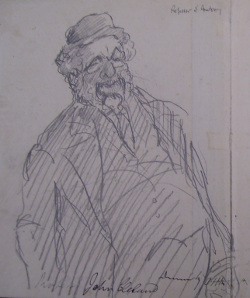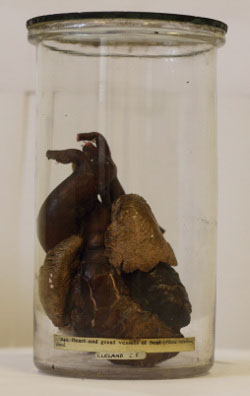John Cleland and his anatomical collection in context

Cleland was an accomplished researcher and dedicated teacher, much beloved by colleagues and students alike. His writings demonstrate his dedication to the teaching and advancement of scientific knowledge, but they also reflect his more philosophical side. There are philosophical essays and even a collection of poems entitled Scala Naturae (“the great chain of being”, a historical concept which tries to explain nature and its orders and hierarchies). Cleland was commemorated by a contemporary in an obituary [1] as “the last representative of the transcendental and philosophical anatomists of the nineteenth century”.
Through a virtual exhibition and a series of talks, this project will explore Cleland’s collection in its broader historical context.
 What was the role of this collection in Cleland’s own life and research?
What was the role of this collection in Cleland’s own life and research?
What place did it hold in the context of medical education at the University of Glasgow during Cleland’s time?
How did it relate to the wider context of late 19th and early 20th century science and medicine?
In investigating the specimens through Cleland’s own words and using archival material to view Cleland through the eyes of his contemporaries and students, I will provide a snapshot of the life and work of this important but relatively little-known Scottish anatomist.
Visit the Flicker page displaying highlights of the archival material related to the life, work, and anatomical preparations of the anatomist John Cleland.
Ianto Jocks, PhD researcher in Classics
Ianto is producing an English translation and commentary of the Compositiones medicamentorum of Scribonius Largus, a 1st century CE Latin medical recipe collection.
[1] “A. K.” (1925) ‘Obituary – Professor John Cleland, F. R.S.’, Nature 115: 431-2.

